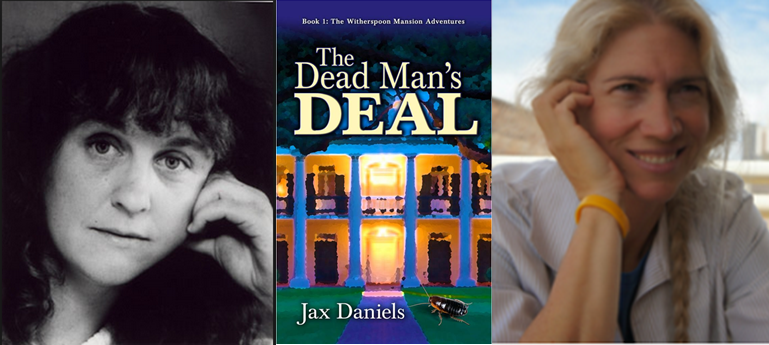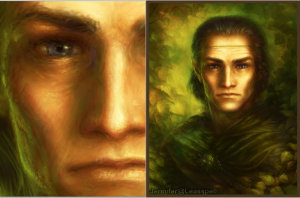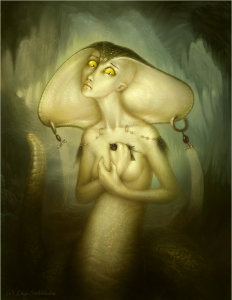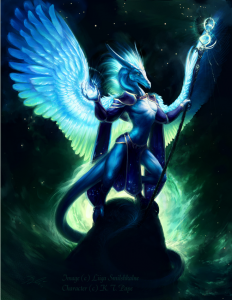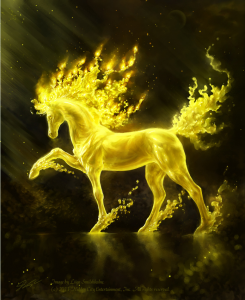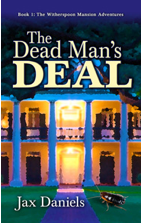The second book, currently titled
The Cook’s Curse, is complete, and in the hands of beta readers now. I hope to have it released in May of 2015.
There is something I have been dying to ask. The idea of a cockroach as a magician’s familiar is hilarious. What inspired that?
I knew I wanted Winki to have a familiar to help her through her new life. The traditional role is a cat, which has been done to death. A dog was recently done in the Dresden Files (one of my favorite series). I wanted something unique to New Orleans, and something small so Winki could carry it in a pocket, and I IMMEDIATELY thought of a cockroach. And I IMMEDIATELY dismissed the cockroach because, well, ew! No one wants to read about roaches, right? But, the thought wouldn’t go away. Hence, Hercule.
The Dead Man’s Deal combines elements of mystery with traditional fantasy: the training and testing of a champion. Which came first, or was it all part of your initial inspiration?
The fantasy element came first, and specifically the idea of the tournament. As I wrote it, however, I wanted Winki to be more reluctant about her new role, and the mystery unraveled itself.
You changed the gender of your main character from male to female because a writer friend suggested it. It’s hard for me to imagine Winki any other way. Besides the obvious, how did that change the way you saw his/her character?
Her attitudes towards (for example) cockroaches and spiders were much easier to write since they aligned with my own biases. Surprisingly, little changed as to how I saw the character – brave, caring, a bit thick – but it changed her voice tremendously.
How did that change impact the plot?
The biggest change plot-wise had to be the beginning. When the reader meets Winki she’s in a state of depression, lacking any interaction with the world. She starts her journey from a more frightened place and grows into the champion, whereas a man would come from a disbelieving place, I think.
The book is, on the whole, light-hearted, but there are some horrifyingly cruel things that have happened to characters in the past or that threaten characters at the time of the story. Was it hard to balance those so that the tone of the story didn’t change drastically somewhere in the middle?
It was, and it remains a tough line to walk. But that is life, really. We joke, we laugh, we live, yet horrible things happen to all of us, and happen all around us. It’s our own strengths that make us laugh again.
I’ve read that you were a math major and were drawn to math because you like solving puzzles. What was it like putting together a puzzle in the form of a mystery inside a fantasy novel?
A task involving many notes! I keep lists of problems and questions (as well as characters, places, and descriptions) to make sure that I answer everything – I even had a carry-over list for “things yet to be fully explained.” The secret to fun fantasy is the tiny line of plausibility!
How much planning do you do in advance? Do you begin with an outline, or do you begin with only a general idea and write the story to see what will happen next? Or is it a combination?
Since this is a series, I have a major story arc. Each book has a “what happens here,” a major plot point on the arc. Then. For each book, I outline – I love an outline. I don’t always stick to it 100 percent, but it gives me breadcrumbs to follow to get to that story’s big reveal.
The inevitable question in an author interview: who are some of the writers that have particularly influenced your own writing?
I’ve enjoyed Jim Butcher (The Dresden Files), Anne Rice (the Lestat novels), Laurie R. King (the Mary Russell books), and recently Christopher Moore (the novel Lamb). The largest influence came from direct feedback from my writers group, who’ve been helping me develop for over ten years now.
Did you choose fantasy, or did fantasy choose you?
I chose it. I’ve written mysteries and science fiction in the past, but fantasy just rings my bell.
You’ve lived all around the country. Do you think that has influenced your writing?
As a kid we moved a lot, and making friends could be a long process. In the meantime, I daydreamed. I think that primed the creative pump, making tapping into the bizarre and “what ifs” a little easier now. It’s also made me open to change. I’m not tied to a particular story or character; so when someone suggests, for example, the hero needs to be a heroine, I shrug and give it a whirl.
New Orleans, where I currently live, gets a bunch of credit. It’s one of the oldest cities in the US, and it hums with history and mystery. It’s hard NOT to daydream here!


